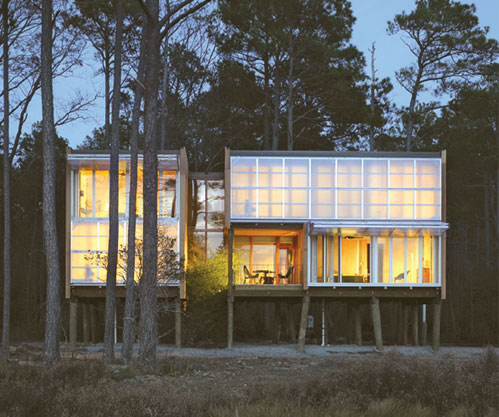Prefabrication's Green Promise
To really give the public what it wants, especially if those desires include green features, the prefabricated housing industry needs to change the way it operates. Green-housing manufacturers are leading this change-s some by starting their own factories and demanding more from their manufacturing partners, others by reimagining the entire housing industry.
Architect Michelle Kaufmann became interested in prefabrication when she moved to Northern California and found a dearth of affordable green homes. After designing and building her own home with a modular manufacturer, she started a company to design and build green prefabricated homes. Kaufmann's firm has built more than 30 homes since its start in 2002, and plans to increase that number to at least 100 by the end of 2009. Michelle Kaufmann Designs, based in Oakland, California, offers seven basic homes that can be customized within certain limits, and also offers custom design-build services.
Â
 |
|
|
Â
 |
Wood slats provide shading for the home and connect it to the large Lobolly pine trees that surround it. Photo © Peter Aaron/Esto |
Â
Faced with the challenges of working with existing manufacturers to meet the high green standards she sets for her homes, Kaufmann started her own factory near Seattle. This move allowed her to more closely control the quality of the homes she was selling and to develop a detailed protocol for building the homes. As the company looks at expanding its operations nationwide, it is considering partnering with manufacturing companies that can meet its specifications. Kaufmann's company could pass on its own best practices, which would theoretically result in a greening of the partner factory's operations. Such partnerships could, in time, change the industry standards for prefabricated construction, making green features standard rather than custom additions.









